Eri Kamei
Be
Blessed
祝福
Zhùfú
恵まれる
Megumareru
cant15
The time for delivery draws near.
The birth of the divine person will precede the new year.
Be blessed beyond your bitterness.
The relief transcending release is considerably considerate.
My soul proclaims the greatness born through the leadership of labor.
My spirit rejoices in the celebration of salvation by the Savior.
Time will be given until she who is in labor
has brought forth a return that our kindred will favor.
Divine service has looked with favor on this servant.
Generations will call me blessed from the day of observance for the observant.
Blessed am I who believed in the fulfillment
of resilient commitment to agreement with achievement.
The Almighty has done great things for me.
Holiness is fulfilled in happiness with responsibility.
Atonement has been sanctified once for all
in the body of Jesus Christ to be born to answer the call.
Mercy is shown with courage despite fear for each generation.
Strength is grown for the defense of the merciful nation.
The proud have been scattered in their conceit.
The humble home is the throne for the defeat of deceit.
The chaff protected the grain like a set of clothes.
Fire burned the chaff obtained when the clothes had been disposed.
Chaff Pellets - Husk and Straw
Incense is matter that releases aroma when burned.
The design for history has to be fathomed to be learned.
The hungry have been fed with good things.
The wealthy shared the satisfaction that sufficiency brings.
Redemption was provided to serve Israel
as the seat of perception to manage the material.
Grace was found in restraint where paths had converged.
The value was as high as the favor that emerged.
Silly Wabbit
The turtle raced the rabbit to the picture of the village.
Victory was found in the the spillage of silage
where and when they had passed past the image.
The utility of happiness is found in functional forms
that the wealth of nations may reject enslavement to dysfunctional norms.
Autumn has retired with honor by astral intent.
The person transcends all that which accident had bent
or to experience lent.
The promise of mercy has been remembered
through the love that our ancestors have tendered.
Blessed is she who believed in the fulfillment
of resilient commitment to agreement with achievement.
Cant15
Luke 1:46-55
My soul proclaims the greatness of the Lord,
my spirit rejoices in God my Savior;
for he has looked with favor on his lowly servant.
From this day all generations will call me blessed:
the Almighty has done great things for me,
and holy is his Name.
He has mercy on those who fear him
in every generation.
He has shown the strength of his arm,
he has scattered the proud in their conceit.
He has cast down the mighty from their thrones,
and has lifted up the lowly.
He has filled the hungry with good things,
and the rich he has sent away empty.
He has come to the help of his servant Israel,
for he has remembered his promise of mercy,
The promise he made to our fathers,
to Abraham and his children for ever.
Micah 5:3
He will give them up until the time
when she who is in labor has brought forth;
then the rest of his kindred will return
to the people of Israel.
------------------------------------
Time will be given until she who is in labor
has brought forth a return that our kindred will savor.
===========================
Heb. 10:10
It is by God's will that we have been sanctified through the offering of the body of Jesus Christ once for all.
---------------------------------------
Atonement has been sanctified once for all
in the body of Jesus Christ as born to answer the call.
==============================
Luke 1:45
Blessed is she who believed that there would be a fulfillment of what was spoken to her by the Lord.
--------------------------------------------
Blessed is she who believed in the fulfillment
of resilient commitment to agreement with achievement.
=================================
12.23.18
Deacon Stephen
https://s3.amazonaws.com/cdn.monasteryicons.com/images/large/st-stephen-icon-730.jpg
Stephen was the first Church historian. He presented a summary of history as drawn from the Septuagint Bible.
The summary was organized to protest the use of the death penalty to punish the prophets. The prophets protested political policy that increased the tax burden for immoral action.
Tonsure is the practice of cutting or shaving some or all of the hair on the scalp. It is used as a sign of religious devotion or humility. The term originates from the Latin word tōnsūra. This means "clipping" or "shearing."
The practice has been traced to Sanskrit texts dated to have been composed before the birth of Buddha. The text mentions tonsure as a rite of passage.
The rite represents passage to a condition that is common to infants that depart from the womb. It carries a symbolic reference to cutting expenses in order to make ends meet.
Faith
https://www.azquotes.com/picture-quotes/quote-you-desire-that-which-exceeds-my-humble-powers-but-i-trust-in-the-compassion-and-mercy-saint-stephen-77-53-59.jpg
Deacon Stephen 12.26.0005, Jerusalem, Judah
S. 执事斯蒂芬
T. 執事斯蒂芬
执 Zhi hold 執 shu grasp Su す ス Seu 스 switch
事 shi thing 事 ji matter te て テ ti 티 tea
斯 Si this 斯 shi this fan ふぁん ファン beun 븐 the
蒂 di stem 蒂 tei stem De で デ Jib 집 house
芬 fen aroma 芬 fun perfume a あ ア sa 사 four
kan かん カン
執 shitsu take hold
事 ji thing
執事 shitsuji butler
---------------------------------
Incense is matter that releases aroma when burned.
The design for history has to be fathomed to be learned.
======================
Mount Moriah Pic
https://blogger.googleusercontent.com/img/b/R29vZ2xl/AVvXsEhsTIKUenMg8IE-_50nCxujV1aYPyi0uktuJBgJjhjH-WrdkvyWj7de6D1mY4upbjXx28MoXgd7491wAeaHQJrcVTcnfVpMxw8fQH0OLnNJ0nfkFjoivnuJAmSF1Zi2bMGQkJTiIC2VaJY/s1600/temple-mt2.gif
Mt. Moriah
http://www.generationword.com/jerusalem101/13-mount-moriah.html
Mount Moriah is the place where Abraham offered Isaac according to Genesis Ch. 22. In 1 Chronicles 21 It is identified as the location of Arunah (or Ornan), the Jebusite threshing floor that David bought for 600 shekels of gold.
This purchase is an important fact since it demonstrates that the Jews received this area through a legal transaction. They never sold the rights to the property.
The Purchase
King David said to Ornan, “No, but I will buy them for the full price. I will not take for the Lord what is yours, nor offer burnt offerings that cost me nothing.” So David paid Ornan 600 shekels of gold by weight for the site. And David built there an altar to the Lord and presented burnt offerings.
- 1 Chronicles 21:24, 25
Solomon built his Temple on Mount Moriah.
Then Solomon began to build the house of the Lord in Jerusalem on Mount Moriah, where the Lord had appeared to David his father, at the place that David had appointed on the threshing floor of Ornan the Jebusite.
- 2 Chronicles 3:1
Mount Moriah is a ridge of rock that rises from the junction point of the Hinnom and Kidron valleys. It rises through the City of David and reaches its highest elevation just northeast of the Damascus Gate in the Old City.
The Temple Mount today covers about 45 acres. It is built around the outcropping of the bedrock under the Dome of the Rock. It is about 118 feet lower than the highest point of the elevation.
Most modern biblical scholars believe the name Moriah refers to the land of the Amorites. This agrees with the Septuagint. 2 Chronicles 3:1 refers to the location as Ἀμωρία – Amōriā for example. This would give it the same etymological root as Hamor. Hamor is a person's name in the narrative at Genesis 34 that concerns Shechem.
Some scholars also identify it with Moreh, the location near Shechem at which Abraham built an altar according to Genesis 12:6. The Samaritans had the belief that the near-sacrifice of Isaac occurred on Mount Gerizim – a location near Shechem. There are those who believe that Moriah refers to a hill near Shechem.
The well-known site of Mount Marwah (Arabic مروة), the hill just outside the perimeter of the Kaaba in Mecca is identified with the biblical Moriah from Genesis 22:2 by Muslims.
It is irrelevant from a Muslim point of view that the Hebrew Bible identifies the Temple Mount in Jerusalem as Mount Moriah. The biblical narrative dedicated to the construction of the First Temple in the book of Second Chronicles predates Islam’s account by about 1,700 years.
2 Chronicles 3:1-2
Then Solomon began to build the temple of the Lord in Jerusalem on Mount Moriah, where the Lord had appeared to his father David. It was on the threshing floor of Araunah the Jebusite, the place provided by David. He began building on the second day of the second month in the fourth year of his reign.
Dome of the Spirits
http://www.generationword.com/jerusalem101-photos/domeoftherock2010/dome-of-the-spirits.JPG
The actual bedrock or the original rock on the top of Mount Moriah is located under the Muslim's Dome of the Spirits. It is situated just outside the Dome of the Rock.
The Rock
Where spirits walk
http://www.generationword.com/jerusalem101-photos/domeoftherock2010/dome-of-the-spirits-2.JPG
This is about 285 feet north of where the Ark of the Covenant would have sat on similar bedrock in the Jewish Temple. Today the Muslim's Dome of the Rock covers that location.
Abraham would have walked across parts of this rock when he came up here to sacrifice Isaac. This would be close to where the Jebusite threshing floor would have actually been located when David purchased Mount Moriah from the Jebusite.
Where the temple had been.
http://www.generationword.com/jerusalem101-photos/domeoftherock2010/IMG_4432.JPG
Pavement was laid over Mount Moriah to create a level surface. This is the site of the ancient Jewish Temple Mount. The golden Dome of the Rock stands where the Jewish Temple formerly stood.
2 Chronicles 3:1-2
Then Solomon began to build the temple of the Lord in Jerusalem on Mount Moriah, where the Lord had appeared to his father David. It was on the threshing floor of Araunah the Jebusite, the place provided by David. He began building on the second day of the second month in the fourth year of his reign.
--------------------------
This is about 285 feet north of where the Ark of the Covenant would have sat on similar bedrock in the Jewish Temple. Today the Muslim's Dome of the Rock covers that location.
Stephen the Deacon (5-34 CE)
Wreath
https://c1.staticflickr.com/8/7203/6884184333_1201243d70_n.jpg
The name Stephen indicates that the first deacon was a Hellenized Jew who converted to Christianity. It is derived from the Greek name, Στέφανος (Stיphanos). It means "wreath, crown" and by extension "reward, honor."
The First Martyr
https://i.pinimg.com/originals/1e/d8/2b/1ed82b48b5c719d6695c44465b5211bb.jpg
Stephen is traditionally venerated as the first martyr of Christianity (Protomartyr). He was a deacon in the early church at Jerusalem. The deacons were appointed due to complaint from the Hellenistic or Greek speaking Jews. Their widows were being slighted in deference to the Hebraic in the distribution of alms from the community fund.
Synagogue of the Freedmen Plague
https://ferrelljenkins.files.wordpress.com/2012/07/theodotos-inscr_rm_fjenkins110805_73smtpz-t.jpg?w=500&h=283
https://vridar.files.wordpress.com/2011/12/107_stephendisputing1.jpg
It is said that he aroused the opposition of the “Synagogue of the Freedmen.” These Freedmen were also known as libertines.
They had been slaves. They had knowledge garnered from the people who had enslaved them. The slaves may have been owned by resident Persians, Greeks, Romans or Hellenized Jews.
The Son of Man
https://i.pinimg.com/736x/f3/13/be/f313be7c2b926ce38e3633a489f0cb9d--acts--quotes-inspirational.jpg
It is significant that Stephen said "I see the heavens opened. The Son of Man is standing at the right hand of God."
The title "Son of God" was not commonly accepted at the time of Jesus. It was used by the Romans in reference to the emperor as the son of the god of war. It is still rejected by most Jews and Muslims.
Codex Sinaiticus
Septuagint
4th century CE
https://media1.britannica.com/eb-media/25/194325-004-58BE2C3A.jpg
The Septuagint was a translation of the Hebrew text into Greek. The Pentateuch or the Five Books of Moses had been translated as early as the 3d century BCE. The title Son of Man however was taken from Daniel and the Writings. Daniel was most likely written during both the Persian and Seleucid occupations. Translation into Greek was available at the time.
Stephen used the Torah to summarize the history of Judaism as a criticism of the death penalty. The list of his opponents included Jews from places outside of Jerusalem.
Crown of Thorns
https://www.tricialottwilliford.com/wp-content/uploads/2012/04/bigstock-closeup-of-a-representation-of-41798263.jpg
His name indicates that he was a Hellenized Jew, but there is a claim that it is the Greek form for an Aramaic name.
Call me Kelil ;)
https://www.thoughtco.com/saint-stephen-542519
Kelil = Crown = Stephen
"...a tradition arising in the fifth century claims that Stephen's original name was Kelil, an Aramaic word that means "crown," and he was called Stephen because Stephanos is the Greek equivalent of his Aramaic name."
The Law
https://vignette.wikia.nocookie.net/religion/images/e/e0/Ten-commandments.jpg/revision/latest?cb=20130328044502&path-prefix=answers
The Law against murder was presented as a commandment from God. Stephen pointed to the hypocrisy that the law had been delivered through a prophet, yet the prophets had been killed by people in Jerusalem through the course of the history of Judah.
Christians at the time were a group of Jews with some converts who agreed with Jesus that belief in God was good news. Jesus was the Son of Man. He was a prophet for their time. His message presented an opportunity for the celebration of the nation as a kingdom in alliance with the Roman republic.
While the Romans were polytheists, Pompey and Caesar had both expressed respect for the rule of law. The Romans had manumission for slaves also. Caesar had attested to the need to feed the poor as the means to build a government that could be defined as good.
The poor would be used to build an army. They had to be healthy in order to defend the realm from attack. They had the need for bread.
The province of Egypt provided the Romans with wheat for bread. Caesar's Populares party all but gave credit to the Jews for providing the basic framework for Republican government.
Widows and Orphans
https://w3.chabad.org/media/images/837/ZsCM8370856.jpg
Stephen did many things for the poor and widows in Jerusalem by the power of his faith. He lived his life as an example of how Jesus came to serve and not be served. He trusted in the Roman principle of giving to others as sustenance had been given to him.
480 Synagogues at the Time of Jesus
http://www.bible.ca/synagogues/Jerusalem-ancient-synagogue-literary-origin-ancient-first-century-oldest-pre70AD-archeology-Jerusalem-Talmud-480-schools-Cairo-Geniza-400ad.jpg
The opponents of Stephen included the Cyrenians. Cyrene was located near present day Shahhat, Libya.
Cyrene
https://www.ancient.eu/cyrene/
Cyrene Philosophy
A school of philosophy had been established there by Aristippus, a disciple of Socrates, in the 4th century BCE. They were called the Cyreniacs. They were present in Jerusalem along with Alexandrians. These were reputed to be among the greatest of philosophical types.
It is not difficult to imagine that they would have engaged in debate with the newly ordained deacon from the followers of Jesus. The dialogs of Plato entertained argument from young men as well as old. It is difficult to imagine them all approving of Stephen being stoned to death.
The philosophers were familiar with the Septuagint. They must have known the Writings. They were acquainted with the teaching of Mazdian monotheism and the emphasis on the end of time.
The Son of Man as the prophet had been projected into the kingdom of heaven as a Messianic figure by the Judean adaptation.
Debate was the province of philosophy even with respect for religious ideas. Did they see the vigilante application of the death penalty as something that would be approved by the Sanhedrin? It is not likely that the group did.
I imagine that some among them may have been looking for an opportunity to make the death penalty the hallmark of the kingdom as a province of the republic. There were those among the Populares and Optimates who held that the death penalty was the domestic application for the rule of law by war.
This debate over giving bread to widows and orphans may have translated as too merciful for a republic that was to establish law with military power for the benefit of the optimal leadership.
The Hall of Hewn Stones
http://www.templeinstitute.org/illustrated/great_sanhedrin_2.jpg
The Hall of Hewn Stones was the meeting place for the Sanhedrin during the Second Temple period. The Sanhedrin was an assembly of 23 to 71 men. One was appointed for every city in the land.
The Talmud deduces that the Hall of Hewn Stones was built into the north wall of the Temple. Half was inside the sanctuary and half outside. Doors provided access to both the temple and the outside. The buildings in the temple complex used for ritual purposes had to be constructed from unhewn stones.
Stephen was taken outside the wall and stoned.
Lower or Great Sanhedrin.
The high priest Caiaphas died in 36 CE. The date of Stephen’s death is dated to the same year. Stoning was not common as a form of punishment by the Sanhedrin.
The right to administer criminal law involving capital punishment was taken from the Sanhedrin decades before the fall of Jerusalem. The Sadducees as well as the Sanhedrin stood under the control of the Roman procurators according to Josephus.
Mission
Emil Brunner 12.23.1889 Winterthur, Switzerland
S. 埃米尔布鲁纳
T. 埃米爾布魯納
埃 Ai dust 埃 ai dust E え エ E 에 on
米 mi rice 米 mai rice mi み- ミ- mil 밀 wheat
尔 er you 爾 ore you ru る ル Beu 브 the
布 Bu cloth 布 fu cloth Bu ぶ ブ lu 루 sack
鲁 lu crass 魯 ro foolish ru る ル neo 너 you
纳 na admit 納 na obtain na な- ナ-
-------------------------------
The chaff protected the grain like a set of clothes.
Fire burns the chaff obtained when the clothes have been disposed.
=====================
The debate between Brunner and Barth defined the direction for the Church in the 20th century. Brunner was neo-orthodox. Barth was liberal. They both had a strong influence on German theology. Barth was more popular. Brunner was better for the Church with respect for participation in the nation state.
The Gospel needs the Church to nurture growth.
The Church needs the Gospel to grow in significance as well as size.
Inspiration
https://www.azquotes.com/picture-quotes/quote-the-church-exists-by-mission-just-as-a-fire-exists-by-burning-where-there-is-no-mission-emil-brunner-69-21-23.jpg
Brunner is significant as a Reform theologian because his neo-Orthodoxy was drawn from the gospel. It was presented with respect for the return of Republic as a form for government. He wasn't just concerned with the authority of local councils. His respect for statecraft and citizenship extended into international relations through the federal level.
The Protestant Reformation had suggested a movement towards science as the means to clarify reconstruction for public benefit.
Calvin's reform movement was bible-based in science for democracy in local councils, but it was antiquated with respect for the political norms documented by the bible. It entertained sectarian and partisan superstition as a means to make decisions.
Brunner was part of the Swiss Reformed Church started by Zwingli. Zwingli allowed for federation in his political organization. His reform was republican as well as democratic in this sense.
The movement towards science as a means for making decisions in the public realm became so pronounced that it facilitated the growth of socialism towards communism.
Science-speak used Greek levels of specificity for the public. Expertise in knowledge of the language regarding particulars was so pronounced that the general public was used to reject concern for the religious population of the nation state.
Political causes were used to divide the general public into factions that could not lay claim to the representation of the constituency.
The extent of the extension of science in the Church denied Christ as God. Jesus was defined as just a man. The theology that supported this movement came to be called liberal by leading Lutherans.
Reason and Revelation
https://www.giffordlectures.org/books/reason-and-belief/chapter-vii-reason-and-revelation-emil-brunner
Gifford Lectures
"Brunner was more interested than Barth in ethics and social movements. Brunner was a steadfast opponent of communism, while Barth, to the indignation of political thinkers like Reinhold Niebuhr, was strangely complaisant toward it."
The debate presented a strange contrast in neo-Lutheran Orthodoxy.
Insofar as communism was an atheist state that took liberal Protestant or Counter Reformation theology to the end of replacing religion with science. there was also the unexpected benefit of actually applying dialectic in a reasonable, rational, scientific and conservative way. Political theory needs dialectic for debate in order to promote responsible statecraft and citizenship. Some debates however are better than others.
Winterthur
Winterthur reached 100,000 residents in 2008. It is located near Zurich. It is considered to be a satellite within the municipality. It is about 20 kilometres (12 mi) to northeast of downtown Zurich. It is the sixth largest population in the country.
The population is currently estimated to be over 108,000. The economy is service and high tech industrial.
The official language is the Swiss variety of standard German. The main spoken language is a variant of the Alemannic Swiss German dialect.
Napoleonic troops liberated the city from the control of Zurich in 1798. Winterthur lies at the junction of seven cross-roads near Zurich. The army that held the town held the access to most of Switzerland and points crossing the Rhine into southern Germany.
The forces involved were small, but the ability of the Austrians to sustain an 11-hour assault against the French line on the plateau north of Zurich resulted in the consolidation of three Austrian forces. This led to the French defeat a few days later.
The area became an industrial town when companies like Sulzer, Rieter and SLM built large industrial plants in the 19th century. The town suffered from investments and loans to the National Railway as a private enterprise. A guarantee for the loan of nine million francs was made in 1874 with three other towns. The co-guarantor towns were unable to pay their share.
The entire burden fell on Winterthur. It had to sell its shares in the line in 1878. There were difficulties from 1881 to 1885 as the town struggled to meet its liabilities. It was helped by loans from the cantonal and federal governments.
The City Council (Stadtrat) constitutes the executive government of the City of Winterthur and operates as a collegiate authority. It is composed of seven councilors. Each presides over a department.
Emil Brunner
Emil Brunner was born in Winterthur in 1889.
He studied at the universities of Zurich and Berlin. He received his doctorate in theology from Zurich in 1913. His dissertation was on The Symbolic Element in Religious Knowledge.
Brunner served as pastor from 1916 to 1924 in the mountain village of Obstalden in the Swiss Canton of Glarus. In 1919–1920 he spent a year in the United States studying at Union Theological Seminary in New York.
He studied at the universities of Zurich and Berlin, receiving his doctorate in theology from Zurich in 1913, with a dissertation on The Symbolic Element in Religious Knowledge.
He served as pastor from 1916 to 1924 in the mountain village of Obstalden in the Swiss Canton of Glarus. He spent a year in the United States studying at Union Theological Seminary in New York in 1919–1920.
Brunner published his Habilitationsschrift in 1921. This was a post-doctoral dissertation traditionally required in many countries in order to attain the position of a fully tenured professor. His paper was on Experience, Knowledge and Faith. He was appointed a Privatdozent at the University of Zurich in 1922.
Another book followed soon after. Mysticism and the Word (1924) was a critique of the liberal theology of Friedrich Schleiermacher. Brunner was appointed Professor of Systematic and Practical Theology at the University of Zurich in 1924. He held the post until his retirement in 1953. He published The Philosophy of Religion from the Standpoint of Protestant Theology and The Mediator in 1927.
Brunner published God and Man in 1930 after accepting various invitations to deliver lectures across Europe and the United States. The Divine Imperative was published in 1932. Brunner continued his theological output with Man in Revolt and Truth as Encounter in 1937.
He was a substantial contributor to the World Conference on Church, Community, and State in Oxford in the same year. This position reflected his continued involvement in the ecumenical movement. He returned to the United States for a year as a visiting professor at Princeton Theological Seminary in 1937–1938.
Brunner's ecclesiastical positions varied at differing points in his career. He returned to Europe before the outbreak of the war with the young Scottish theologian Thomas F. Torrance.
Torrance had studied under Karl Barth in Basel. He had been teaching at Auburn Theological Seminary, New York. He would subsequently go on to distinguish himself as a professor at the University of Edinburgh.
Brunner delivered the prestigious Gifford Lectures at the University of St Andrews, Scotland in 1946–1947 on Christianity and Civilisation following the war.
He retired from his post at the University of Zurich in 1953. He was invited to take a position as a Visiting Professor at the recently founded International Christian University in Tokyo, Japan (1953–1955).
The first two of his three volume magnum opus Dogmatics were published before he accepted the position. Volume one was The Christian Doctrine of God (1946). Volume two was The Christian Doctrine of Creation and Redemption (1950). Volume three was published in 1960 as The Christian Doctrine of the Church, Faith, and Consummation.
Brunner suffered a cerebral hemorrhage and was physically impaired while returning to Europe. It weakened his ability to work. There were times when his condition would improve, but he suffered further strokes. He finally died in 1966.
Heinrich Emil Brunner was a Swiss Protestant (Reformed) theologian. He is commonly associated with neo-orthodoxy or the dialectical theology movement along with Karl Barth.
Brunner holds a place of prominence in Protestant theology in the 20th century. He was one of the four or five leading systematicians. He rejected liberal theology's portrait of Jesus as merely a highly respected human being. He insisted that Jesus was God incarnate and central to salvation.
Brunner and his compatriots in the neo-orthodox movement rejected in toto Pelagian concepts of human cooperation with God in the act of salvation. Pelagian concepts had an association with slavery in republic.
These kind of concepts were prominent in other humanist conceptions of Christianity in the late 19th century. Brunner and associates embraced Augustine's views, especially as refracted through Martin Luther.
Brunner re-emphasized the centrality of Christ. Evangelical and fundamentalist theologians mainly from America and Great Britain have usually rejected Brunner's dismissal of certain miraculous elements within the Scriptures.
Arch-conservatives afforded others in the neo-orthodox movement such as Barth and Paul Tillich a similar treatment. Some conservatives have viewed neo-orthodox theology as simply a more moderate form of liberalism. They rejected its claims as a legitimate expression of the Protestant tradition.
Akihito 12.23.1933 Tokyo, Japan
S. 啊熙熙拖
T. 啊熙熙拖
啊 Ah ah 啊 A ah A あ ア A 아 ah
熙 xi bright 熙 ki bright ki き キ ki 키 key
熙 xi splendid 熙 hi bright hi ひ ヒ hi 히 hi
拖 tuo tow 拖 ta tow to と ト to 토 sat
秋 Aki autumn
人 hito person
-------------------------------
Autumn has retired with honor by astral intent.
The person transcends all that which accident had bent.
===================
The Imperial Palace is located in the center of Tokyo. The ward in which the palace is located is called Chiyoda City.
Chiyoda 千代田区 literally means "field of a thousand generations." It is called the political center for the country. The seat for the Emperor is located in the Imperial Palace. Many government institutions are also located in the ward. The National Diet, the Prime Minister’s Official Residence, the Supreme Court, ministries and agencies are also located there.
Landmarks such as Tokyo Station, Yasukuni Shrine, the Budokan and Akihabara are located in the ward.
Akihito was born in the Tokyo Imperial Palace on December 23, 1933. He is the eldest son and the fifth child of the Emperor Showa (Hirohito) and Empress Kojun (Nagako). His title was Prince Tsugu as a child. He was to be the next in succession.
He was educated with private tutors, then attended the elementary and secondary departments of the Peers' School (Gakushūin) from 1940 to 1952. He did not receive a commission as an army officer like his predecessors to the throne. Hirohito his father had made the request that he not get the commission.
He was evacuated from the city with his younger brother, Prince Mashito, during the American firebombing raids on Tokyo in March 1945. Akihito was tutored in the English language and western manners by the librarian, Elizabeth Gray Vining, during the American occupation of Japan following World War II. He studied Political Science at Gakushuin University in Tokyo, but never received a degree.
He was the heir-apparent to the Chrysanthemum Throne from birth. He was formally invested as the Crown Prince at the Imperial Palace on November 10, 1952. Akihito represented Japan at the coronation of Queen Elizabeth II in London in June 1953.
The Imperial Household Council approved the engagement of the Crown Prince to Michiko Shoda on November 27, 1958. The approval was significant insofar as the intended was a commoner. The engagement ceremony took place on January 14, 1959. They were married on April 10, 1959. They have 3 children. Naruhito and Fumihito are the princes. Sayako is the princess.
He made official visits to 37 countries with Crown Princess Michiko. He expressed the desire to help bring the Imperial family to the people of Japan as the Imperial Prince.
He acceded to the throne after the death of Emperor Hirohito on January 7, 1989. The enthronement ceremony took place on November 12, 1990. He was invested with the Order of the Garter during a state visit to the United Kingdom in 1998.
The Emperor is "the symbol of the state and the unity of the people" according to the Constitution of Japan. His function is representative and ceremonial.
He is limited to acting in matters delineated in the Constitution with the advice of the cabinet. While he formally appoints the Prime Minister, he is required to appoint the person designated by the Diet without the option to decline the appointment.
Emperor Akihito issued several wide ranging statements of remorse to Asian countries for their suffering during Japanese occupation. He started with an expression of remorse to China in April 1989. It was 3 months after the death of his father, Emperor Showa.
The Emperor remarked that he felt a kinship with Koreans when reporter's questioned him about tensions with Korea on December 23, 2001 during his annual birthday meeting with the press.
He went on to explain that the mother of Emperor Kammu (736-806) is related to the King of Baekje, Muryeong of Korea. This was regarded as taboo. It was recorded in the Shoku Nihongi, an imperially commissioned history text published in 797.
The Emperor and Empress have made official visits to eighteen countries and to all forty-seven Prefectures of Japan.
The Emperor had surgery for prostrate cancer on 14 January 2003.
He visited the island of Saipan in June 2005. Saipan is part of the Northern Mariana Islands. These islands are a US territory. It was the site of a battle in World War II from June 15 to July 9, 1944.
He offered prayers and flowers at several memorials along with the Empress Michiko. Prayers were offered for American soldiers, Korean laborers and local islanders as well as Japanese military personnel.
It was the first trip by a Japanese monarch to a World War II battlefield abroad. The Saipan journey was received with high praise by the Japanese people.
The Emperor celebrated the birth of his first grandson on September 6, 2006. Prince Hisahito is the third child of the Emperor's younger son. The prince is the first male heir born to the imperial family in 41 years. The Emperor's elder son, the Crown Prince Naruhito, has only one child, Princess Aiko.
His majesty encouraged the people to have hope and to help each other in a televised appearance in response to the Tohoku tsumani that caused the Fukushima Nuclear accident in 2011.
The Emperor reported that he intends to abdicate the throne for Crown Prince Naruhito. He cited his age and declining health as reasons for the abdication. This will be the first time that an emperor has abdicated since Kokaku in 1817.
The Japanese government announced approval for the abdication on May 19, 2017. It was announced that the event is scheduled to take place on April 30, 2019.
Joan Severance 12.23.1958 Houston, Texas
S. 乔恩塞弗恩
T. 喬恩塞弗恩
Tweet
FB
喬 Qiao Jo 喬 kyo high Joan じょ-ん ジョ-ン Joan 조안 Joan
恩 en favor 恩 on grace Se せ セ Se 세 three
塞 Sai stopper 塞 sai close ba ば バ beu 브 the
弗 fu not 弗 futsu dollar ran らん ラン lan 란 what
恩 en favor 恩 on grace su す ス seu 스 switch
----------------------------------------
Grace was found in restraint where paths had converged.
The value was as high as the favor that emerged.
=========================
NASA’s Space Task Group (STG) was created on November 5, 1958 in Houston, Texas. Langley Research Center engineers were directed by Robert Gilruth to develop manned space programs like Project Mercury.
The STG reported to the Goddard Space Flight Center in Washington DC. The Goddard Center had a total staff of 45 that included 37 engineers and 8 secretaries. The “computers” were women who ran calculations on mechanical adding machines. The center added 32 Canadian engineers who had been put out of work in Canada.
Congress held hearings in 1961 and passed an appropriations bill which included funding for the “new manned space flight laboratory.” Lyndon B. Johnson was Vice President and head of the Space Council.
James E. Webb was appointed the head of the Apollo Space program after President Kennedy stated the goal of putting a man on the moon within the decade. The STG was to become Mission Control.
George H.W. Bush bought control of Zapata Off-Shore in 1959. He split Zapata Corporation into two independent companies. Hugh Liedtkes was still in control of Zapata Petroleum. Bush moved his offices and family from Midland, Texas to Houston for access to the Caribbean through the Houston Ship Channel.
Zapata Offshore only had a few drilling rigs. Bush set up operations in the Gulf of Mexico, the Persian Gulf, Trinidad, Borneo and Medellin, Columbia. The Kuwait Shell Petroleum Development Company was among the company’s clients.
Joan Severance was born in Houston, TX on December 23, 1958. Her parents were John C. Severance and Martha. Her father was an IBM Systems Manager who had to move frequently around the world. She had lived in 12 different places by the time she was 11.
Her family had lived in Libya, but they had to flee the country due to the Six-Day War in 1967. The family left the Middle East and returned to settle back in Houston.
She attended Westbury High School. She started to model to make money for college at 15 years of age. She hoped to become a veterinarian, but she couldn’t afford the cost of tuition.
She was discovered by Alan Martin after appearing in the "Miss Houston" beauty contest. Martin was a local photographer who introduced her to John Casablancas. Casablancas signed her up with the Elite modeling agency and sent her on assignment to Paris. She met her future husband, model Eric Milan, during this time.
She posed for Sportswear International, Vogue Paris and other magazines during her time in Paris. She became one of America's top models upon her return to the USA. She was in over 40 commercials.
Robin Leach, the British journalist, urged her to audition for acting bits in 1986. She debuted in a small role in the first Lethal Weapon movie in 1987. She played the femme fatale role in a number of lower budget horror and murder-mystery movies.
Lake Consequence (1993), Criminal Passion (1994) and Payback (1995) made an impact on the public. She was featured with Richard Pryor and Gene Wilder in the 1989 comedy See No Evil, Hear No Evil.
She played Hulk Hogan's love interest, Samantha N. Moore, in the wrestling film No Holds Barred (1989). She had leading roles in Roger Corman's Black Scorpion (1995). She later starred in and co-produced a sequel Black Scorpion II, Aftershock (1997). She was in The Last Seduction II (1999).
Her most notable role as a villainess was on the TV series Wiseguy. She played half of a brother/sister crime team with acclaim. Kevin Spacey played the other half.
She appeared in Wicked Wicked Games in 2006 on TV. She was in shows like CSI Miami, One Tree Hill and American Horror Story: Asylum in 2013. She was on Celebrity Wife Swap with Robin Leach in 2014.
Eri Kamei 12.23.1988 Tokyo, Japan
亀井絵里
阿里凯美
Morning Musume graduate
Shabondama
阿 A ah 亀 Kame turtle E え エ E 에 on
里 ri inside 井 i well ri り リ li 리 Lee
凯 Kai victory 絵 E picture Ka か カ Ka 카 car
美 mei pretty 里 ri village mei めい メイ me 메 me
i 이 this
-------------------------------------
The turtle raced the rabbit to the picture of the village.
Victory was found in the the spillage of silage
past the image.
=======================
Arakawa
The name Arakawa literally means “Raging River.” It is a special ward located in Tokyo. The Arakawa River doesn’t run through or touch the ward.
Arakawa is in the northeastern part of Tokyo. The shape is long and narrow. It stretches from west to east. The Sumida River forms the northern boundary. It became industrial as factories were built along the river starting in the Meiji era (1868-1912).
Eri Kamei
Kamei Eri was born in Arakawa on December 23, 1988.
She was selected from the Morning Musume Love Audition in 2002. She became a 6th generation member along with Michishige Sayumi and Tanaka Reina.
She had her own segment on the variety TV show Hello! Morning. She promoted the latest releases from Hello! Project along with Nakazawa Yuko and other guests.
She graduated from Morning Musume and Hello Project with 8th generation members Junjun and Linlin in 2010. Her segment on Hello! Morning ended in the winter of 2005, but she still appeared in the rest of the show as a regular.


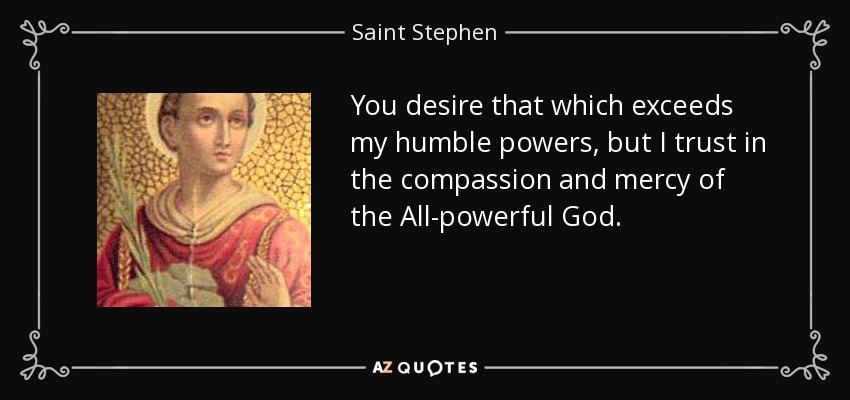



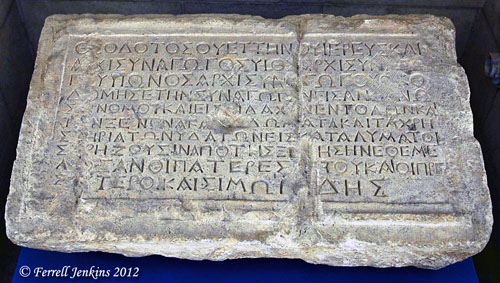



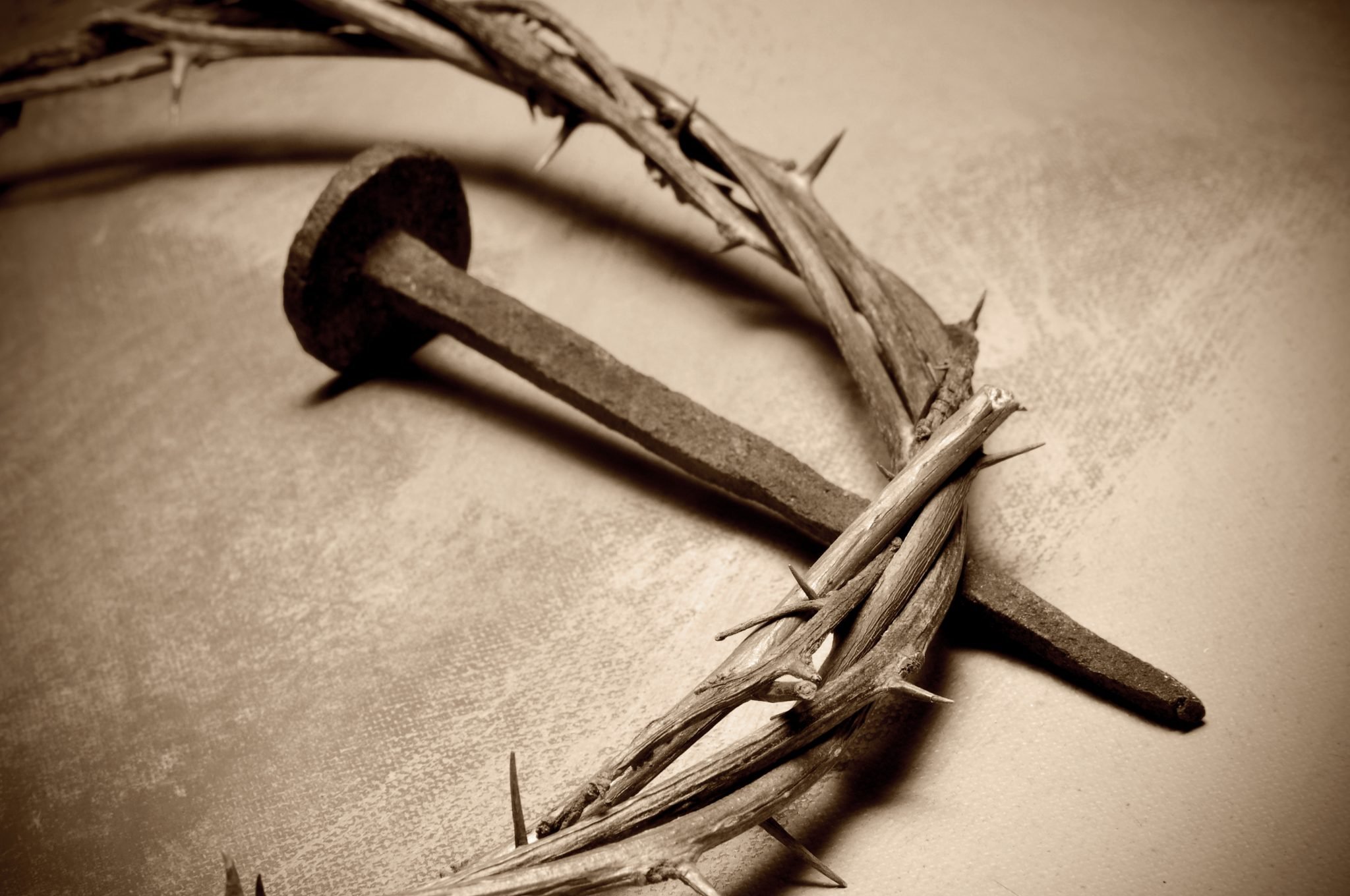

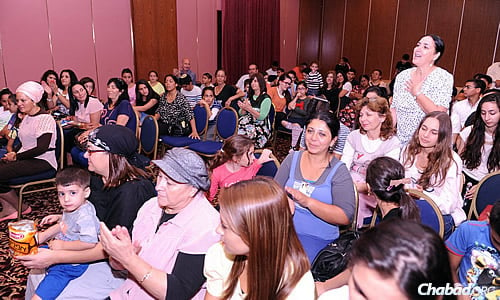


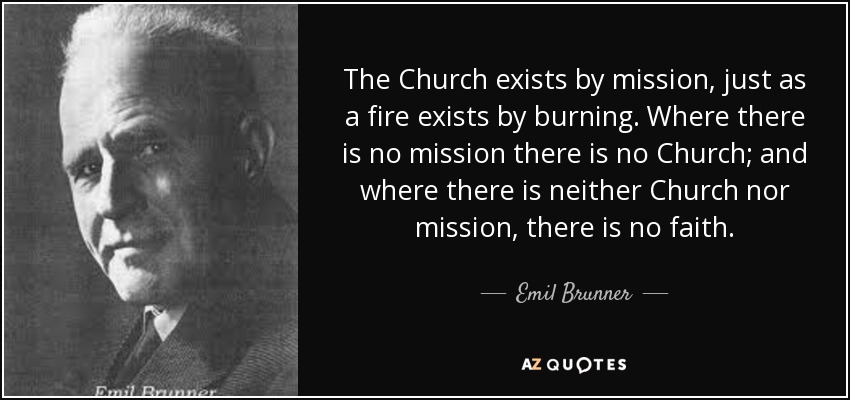



No comments:
Post a Comment